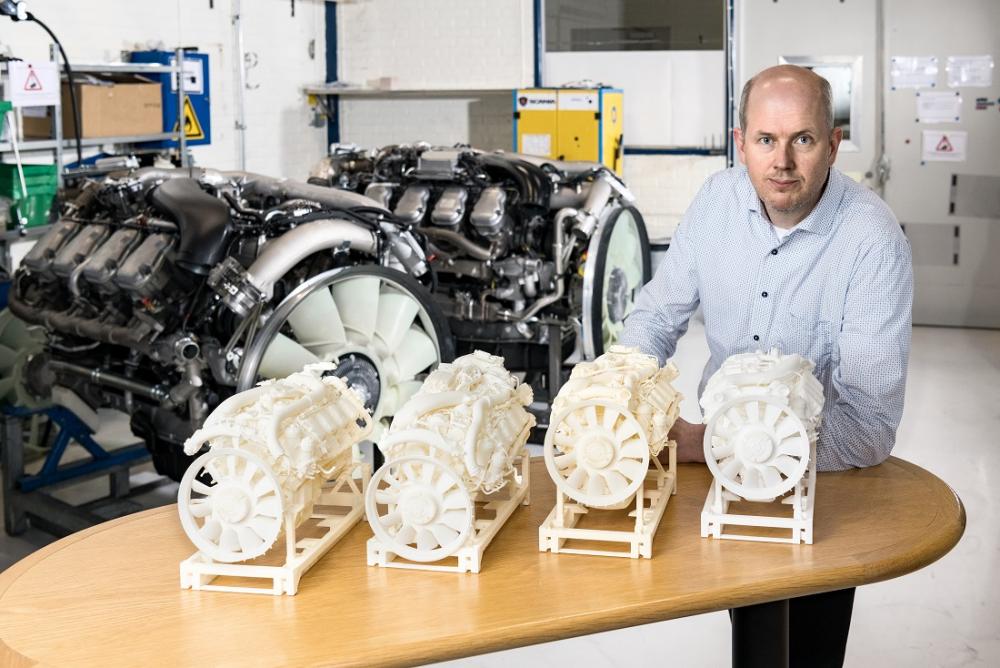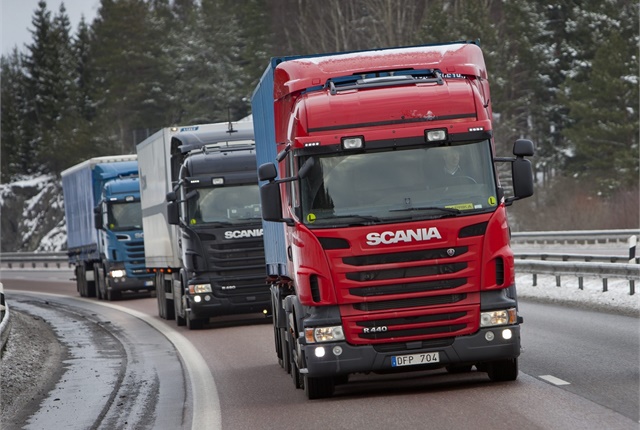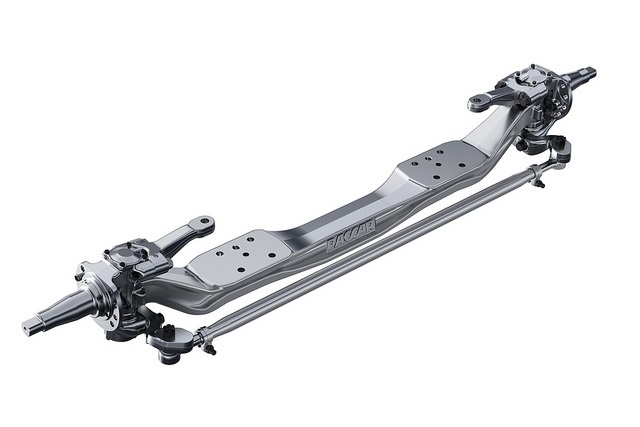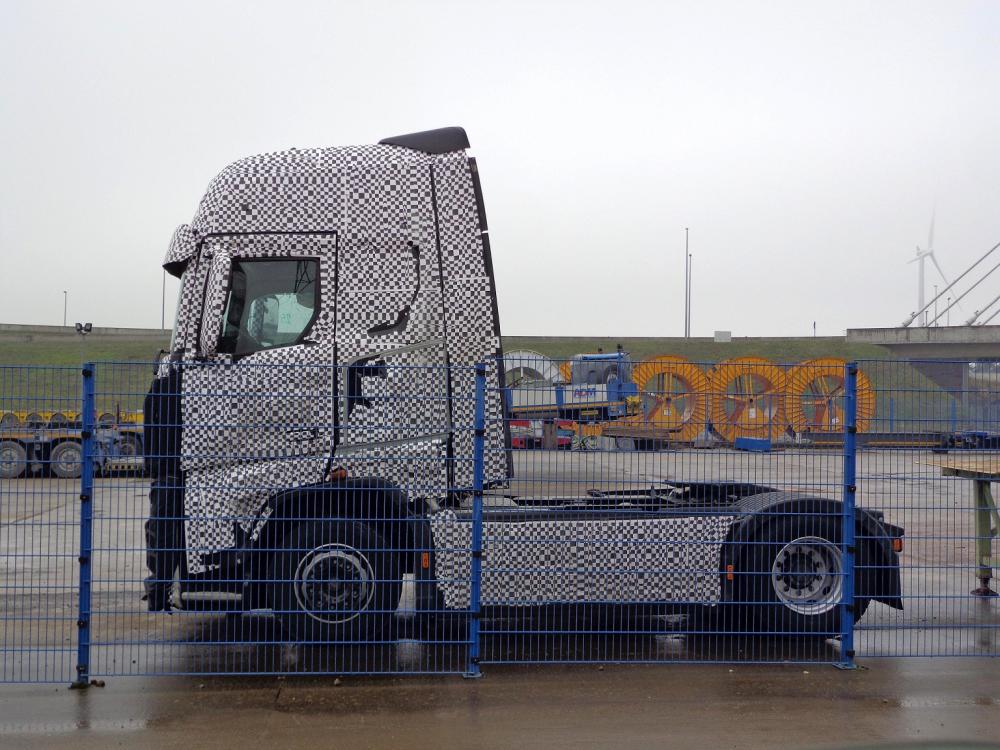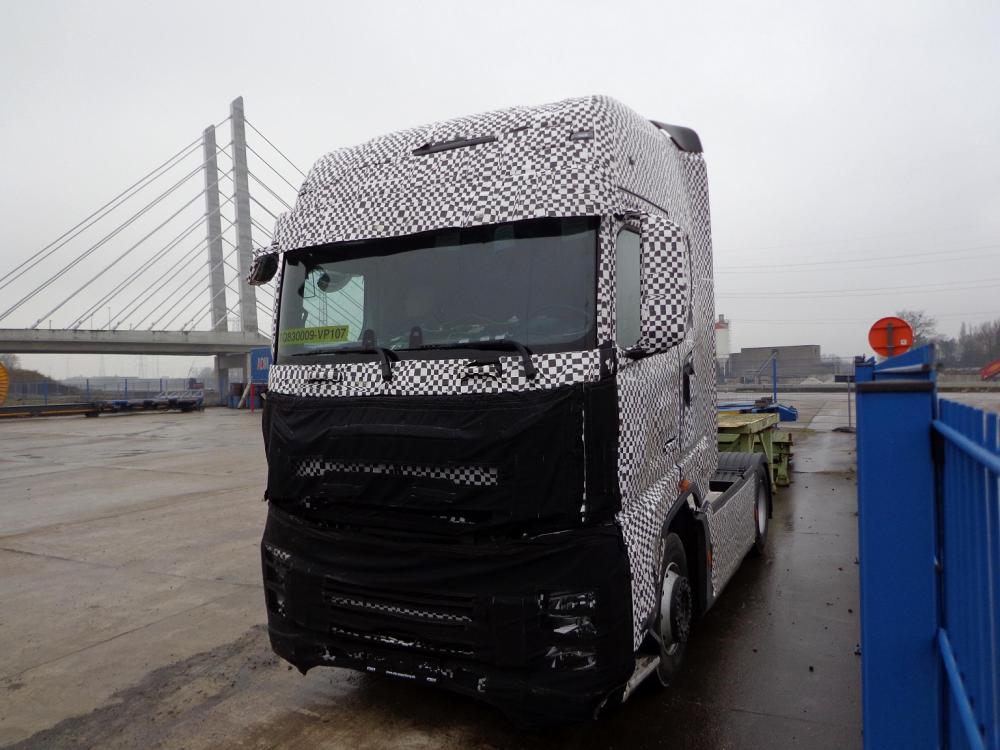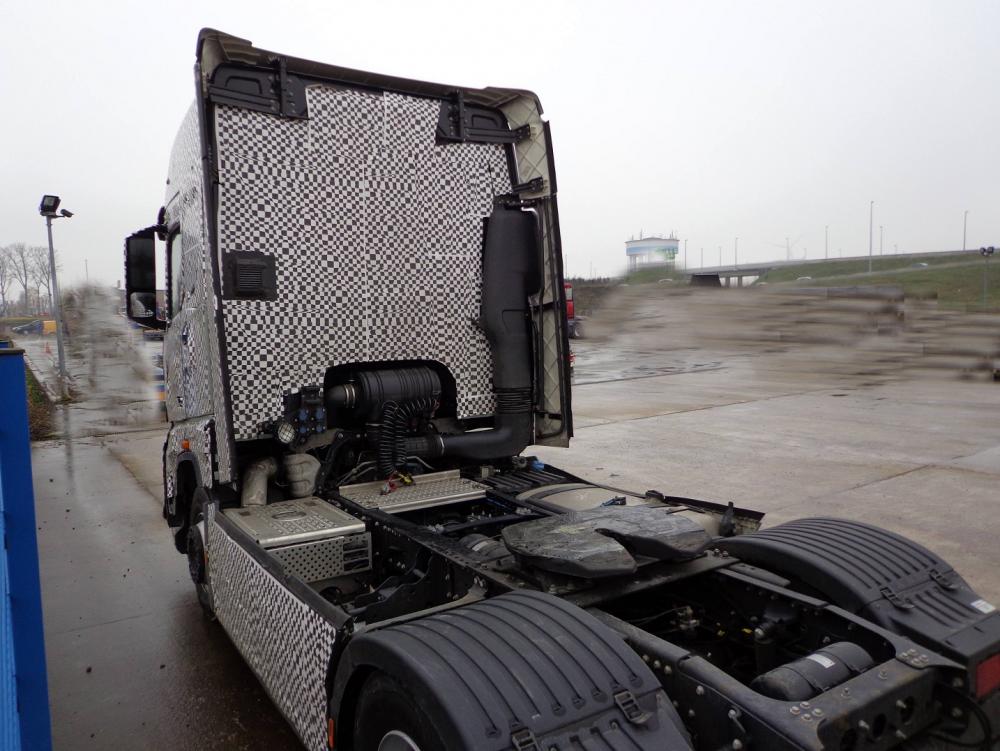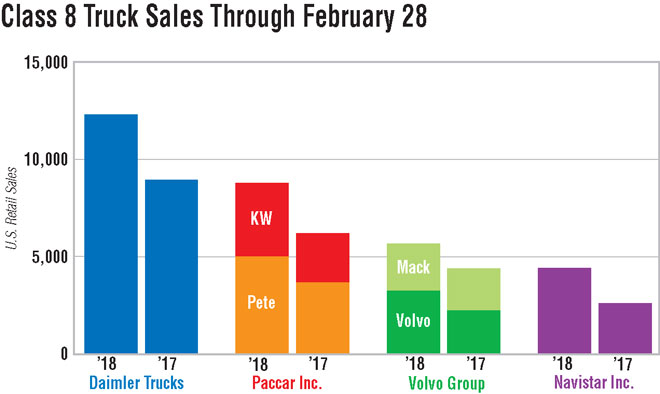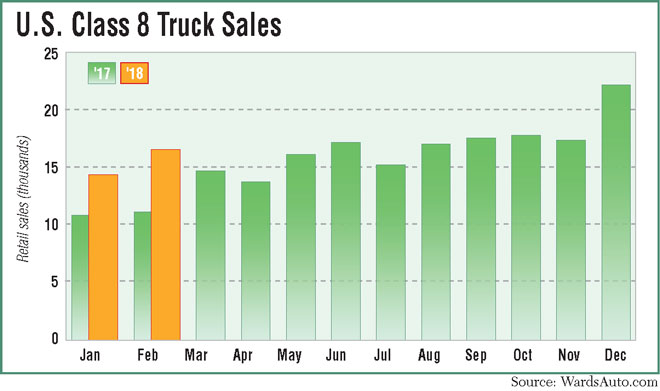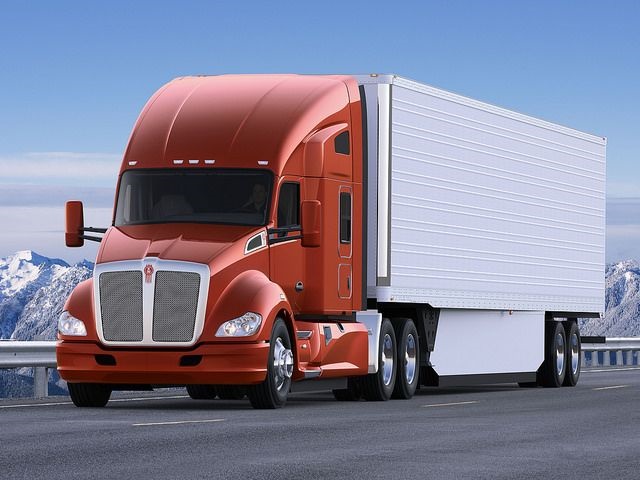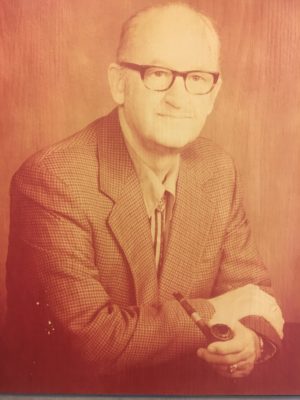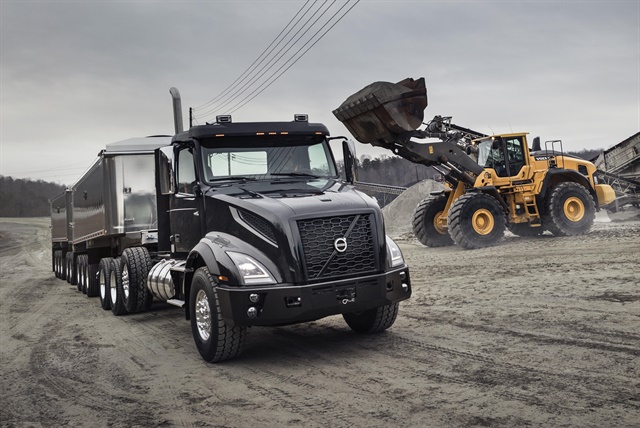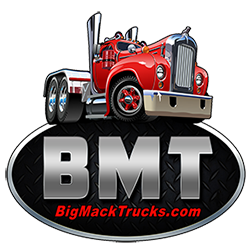
kscarbel2
Moderator-
Posts
18,863 -
Joined
-
Days Won
114
Content Type
Profiles
Forums
Gallery
Events
Blogs
BMT Wiki
Collections
Store
Everything posted by kscarbel2
-
That logo was used by Sears from 1984 to 1994. That familiar engine, with the plastic fuel tank, doesn't look old to me.......it seems as though it was just yesterday that those silver Craftsman lawn & garden machines were being sold.
-
Volvo makes enhancements to its Mack Granite
kscarbel2 replied to kscarbel2's topic in Trucking News
-
. .
-
Scania Group Press Release / March 10, 2018 Today is International V8 Day. Scania’s Chief V8 Engineer Roger Olsson welcomes all the many thousands of V8 enthusiasts around the world to celebrate this great engine. “We celebrate the V8 for its unique appeal – when emotion meets logic. This engine is the perfect mix of impressive hard and soft characteristics – the singular sound and the outstanding performance. This is truly one of its kind in the world of engines.” Every year on March 10th, V8 fans around the world celebrate the V8 engine. It was on that day in 1932 that the first mass-produced V8 engine left Ford’s factory. Since then, V8 engines have found a place in everything from Rolls-Royce cars to Scania trucks, as well as in boats, buses and even motorcycles, providing sheer power and a distinctive rumble. .
-
-
.
-
Heavy Duty Trucking (HDT) / March 16, 2018 Swedish truck maker Scania has finalized a deal with a Finnish fleet to begin testing platooning technology on Scandinavian highways. Scania has been a European leader in truck platooning technology, which uses advanced vehicle safety systems, wireless communications, and autonomous vehicle controls to allow long-haul tractor-trailers to travel in convoy formations with decreased following distances to boost fuel economy thanks to increased vehicle aerodynamics. Scania has signed an agreement with Ahola Transport to use both Scania trucks and autonomous vehicle technology to test semi-autonomous platooning operations involving three or more vehicles on public roadways. The first vehicle will be operated in cruise mode with a human driver steering. All the following trucks in the platoon will be operated under full autonomous control with human drivers monitoring driving operations. Scania called the agreement a “landmark” in the development of autonomous vehicle technology, noting that it is the first such agreement in Europe between a truck OEM and a fleet. Scania officials said the trials in actual traffic situations and varying weather conditions are essential for building public acceptance and confidence in the technology. An Ahola spokesperson noted that the fleet's very first truck purchase, in 1959, was a Scania and that it looked forward to extending that long-term cooperation toward finding new transportation solutions for the trucking industry. .
-
Heavy Duty Trucking (HDT) / March 16, 2018 Kenworth is offering new standard track options for its Paccar proprietary front axle lineup available for Class 8 vocational models. Designed for construction and vocational application, the Paccar says its front axle enhances vehicle payload-carrying capability and complements the performance of Paccar’s MX-11 and MX-13 engines. The Paccar front axle was introduced last year with wide track configurations rated at 20,000 pounds and 22,800 pounds. Paccar front axles use an specially designed, tapered, kingpin roller bearing, which simplifies the design and delivers improved steering efficiency and offers steering angles up to 50 degrees. The axles have a five-year / 750,000-mile warranty. “The Paccar front axle with standard track is an important addition for the vocational market as it provides the best axle/wheel/tire combination to achieve a 20,000-pound rating with 425-series tires, while also offering excellent wheel-cut and maneuverability,” said Kurt Swihart, Kenworth marketing director. Certified Pre-Owned Vehicle Website Kenworth has also launched a new, dedicated, website for its Kenworth Certified Pre-Owned program at www.KenworthCertified.com. The website features a listing of pre-owned certified trucks from participating Kenworth dealers. Available in the United States and Canada, the program offers top-condition Kenworth Class 8 trucks. To qualify, each Kenworth Certified Pre-Owned Class 8 truck must be four model years of age or less, have mileage under 450,000 miles, and pass an extensive 150-point inspection completed by Kenworth certified technicians. .
-
International Launches MV Series Class 6/7 Truck
kscarbel2 replied to kscarbel2's topic in Trucking News
-
Hino Enters Heavy Duty Market with XL Series Truck
kscarbel2 replied to kscarbel2's topic in Trucking News
-
Just as the dual sales channel Chevrolet/ GMC strategy works well for GM, resulting in greater overall sales, the Kenworth/Peterbilt arrangement has worked well to target a broader range of potential customers, to Paccar’s benefit. It all boils down to management’s latest thought process, one or more executive’s personal opinion, rather than what is actually right. Paccar would not have the North American market share it enjoys today if it had only a single brand all these years.
-
At Ford Trucks, we’re serious about trucking. It's why we designed the all-new 2019 Ford Cargo heavy truck range from the ground up to meet your needs and expectations. See your authorized Ford heavy truck dealer for details. . .
-
Transport Topics / March 15, 2018 U.S. retail sales of Class 8 trucks shot up 49% in February to nearly 17,000 units as all but one truck maker posted high double-digit gains. Truck makers sold 16,687 units compared with 11,200 a year earlier, WardsAuto.com reported. Year-to-date, sales climbed 40.6% to 31,145. They are forecast to surge this year compared with 2017. “Truckers’ profits are off to the races, and when truckers make money they buy trucks,” Michael Baudendistel, a financial analyst with Stifel, Nicolaus & Co., wrote in a note to investors. In the 2017 fourth quarter, revenue per mile (excluding fuel surcharges) for public truckload carriers rose 10% year-over-year. As a result of the new tax reform law, their net margins are expected to increase 6% to 7% compared with 4% on average, Baudendistel wrote. “This is kind of the natural outcropping of what we have seen swelling over the last six months or so [as Class 8 orders topped 218,000],” said another analyst. He said a cycle of strong retail sales is at hand. Its latest forecast calls for North American Class 8 sales in 2018 to increase 25% to 314,500 compared with 252,000 in 2017. In 2019, the total is expected to stay essentially flat at 314,800. “Everybody is expanding to get what [freight] they think they can get” amid vigorous freight demand, nearly full-truck utilization and high rates, said Don Ake, vice president of commercial vehicles, at research firm FTR. “Now, in most places logistics is much harder to manage,” he said. The demand for trucks has truck makers ratcheting up production rates, which now stretch into October at Daimler Trucks North America, the company reported. DTNA’s Freightliner brand sold a leading 6,310 heavy-duty trucks, up 46.4% from a year earlier and good for a 37.8% market share. Western Star, DTNA’s niche brand, sold 379, up 34.9% from the 2017 period, earning it a 2.3% share. In a survey of about 25 DTNA dealers, they reported extended lead times for Freightliner are longest for over-the-road Class 8 trucks, according to Neil Frohnapple, director of equity research at The Buckingham Research Group, who conducted the survey. “A few dealers are concerned that customers could switch to other [truck makers] with shorter production lead times from their respective factories,” Frohnapple wrote in a note to investors. For International Trucks, a unit of Navistar Inc., sales hit 2,244, up 71.8% from the 2017 period and good for a 13.4% share. International’s backlog also is filling out the third quarter, the company said. “So everybody wants the best deal they can, but what they really want is the overall best value. And we’ve been very, very successful with the launch of our new products, particularly the LT [on-highway Class 8], and the A26 [12.4-liter engine] is doing extremely well also,” Michael Cancelliere, Navistar’s president of truck and parts, said March 8 during a fiscal-year first-quarter earnings call with analysts. At Peterbilt Motors Co., sales were 2,487, up 36.9% from a year earlier and good for a 14.9% share. Kenworth Truck Co. notched 2,100 sales, a year-over-year increase of 57.8% and good for a 12.6% share. Peterbilt and Kenworth are units of Paccar Inc. In February, Peterbilt introduced its Model 579 UltraLoft, an 80-inch integrated sleeper that has a 2% improvement in aerodynamics over the company’s current detachable sleeper. Production is scheduled to begin this summer. At the same time, Paccar is not concerned with 2018 being the possible peak of the current cycle, CEO Ron Armstrong said during a recent fourth-quarter earnings call with analysts. “We’ll flex to adjust to whatever the market demands are, and it’s a real strength of our company,” Armstrong said. Volvo Trucks North America sold 1,973 trucks, an 88.3% gain from a year earlier, and earned an 11.8% share. VTNA on March 14 launched its updated Class 8 VNX model designed for heavy-haul applications, which the company said made up a high-profile segment of the industry. It is available for order as a day cab, flat roof or midroof sleeper. The earlier version came on the market in 2013. Mack Trucks sold 1,194 trucks, an 8.1% gain over the year-earlier period, for a 7.2% share. “We expect there will be great opportunities this year,” said Jonathan Randall, senior vice president of sales and marketing for Mack Trucks North America. “We also expect some challenges along the way as we continue to keep a close eye on supply chain disruptions that can occur during a booming year.” .
-
Ford set to replace 75% of North American lineup in 2 years Michael Martinez, Automotive News / March 15, 2018 4 new nameplates planned DETROIT -- Ford Motor Co. says it aims to supplant Toyota Motor Corp. as the top seller of hybrid vehicles in the U.S. in three years as part of a dramatic reshaping of its lineup to focus heavily on utility vehicles and pickups. The automaker plans to add two off-road SUVs and create hybrid or electric versions of its other utilities with the expectation that light trucks will account for nearly seven out of every eight vehicles it sells in 2020. The automaker on Thursday said it would replace more than 75 percent of its North American lineup and add four nameplates within the next two years. It said the product blitz would reduce the average age of its fleet to 3.3 years from 5.7, giving it the industry's freshest lineup among full-line automakers. By 2020, Ford expects pickups, utilities and vans to be 86 percent of its sales, up from about 70 percent today. It will have eight utilities in North America, up from six today. Ford plans to offer a hybrid variant -- either a traditional hybrid, a plug-in hybrid or both -- on every new utility it adds or redesigns moving forward. The automaker expects to overtake Toyota in hybrid sales by 2021. Ford is currently No. 2. "We're moving past hybrids as a science project," Jim Farley, Ford's president of global markets, told reporters during an event at the automaker's product development center. "They're an accepted, reliable technology, and we want to make them as emotional and valuable as the desirable EcoBoost." The announcements followed months of pressure by analysts and investors who have asked for more concrete proof of Ford's plans to cut costs and transform its business. Wall Street and industry observers in recent months have criticized Ford as having an outdated product portfolio that, outside of the F series and Mustang, relies too heavily on low-margin cars and older SUVs. "Our passion for great vehicles is stronger than ever," Ford CEO Jim Hackett said in a statement. "This showroom transformation will thrill customers, drive profitable growth and further build toward our future of smart vehicles for a smart world." Product changes Ford's new utility offerings will fall into one of two categories: performance-oriented or off-road. "Where we compete is what you're seeing Ford bet on," Farley said. "We don't just want to be in the generic SUV business. We want to be either in the performance or in the high-speed, off-road business." That means an expansion of the Ford Performance ST badge, which Ford has already announced for the freshened Edge coming this year. There will also be an Explorer ST, Farley said Thursday. He also said Ford will offer a "lineup of off-road SUVs," including a small, purpose-built SUV and the Bronco, which is arriving in 2020. Farley said Ford was looking to target brands such as Jeep and Land Rover but with a different customer in mind. "Both of these vehicles are for a growing group of people who want to simplify their life and get out there with their family and friends," he said. "For Jeep, that's rock-crawling in Moab. For Ford, our people want true off-road vehicles that are comfortable at high speeds. They don't want SUVs that look like doomsday vehicles or have spartan, government-issued interiors." Additionally, Farley said Lincoln plans to offer two SUVs by 2020, including the Explorer-based Aviator. He said the luxury brand will add four utilities after 2020 but declined to go into specifics. In addition to off-road SUVs, Ford has said it plans to unveil a Mustang-inspired battery-electric SUV, tentatively referred to as the Mach 1. "That vehicle is going to be famous without having to shoot it up in space," Farley said, in a reference to Elon Musk's stunt that launched a Tesla Roadster via a SpaceX rocket last month. Operations changes Ford is working to make its vehicle-building process more efficient. It expects to achieve $4 billion in engineering efficiencies over the next five years. Among those efficiencies, it's reducing by 20 percent the time it takes a vehicle to go from a sketch to the showroom, and it's improving its plant changeover time by 25 percent. Moving forward, Ford said it plans to build its vehicles off five flexible, modular architectures. They are: front-wheel-drive unibody; rear-wheel-drive unibody; commercial unibody; body-on-frame; and battery electric. Ford also will significantly reduce the number of combinations available for order. For example, Joe Hinrichs, Ford's president of global operations, said there will be just two or three different moonroofs instead of today's seven. Roughly 80 percent of Ford vehicles are built using only 10 to 20 percent of combinations, he said. "Every action we now take is driven by what will serve our customers in a way that supports our business priorities," Hinrichs said. Ford shares rose 0.45 percent to close at $11.07 on Thursday. New tech Ford also plans to offer more standard driver-assistance technology. It has rolled out a number of features over the years, but now plans to package five of them together under a new name: Ford Co-Pilot360. That includes automatic emergency braking, blind spot monitor, backup camera, lane keep assist and auto high beams.
-
The Mack name has been synonymous with "heavy haul" for over 100 years around the world, and particularly in North America. America was literally built on the back of the Mack truck. That Volvo Group would, in North America, choose the Volvo brand rather than their Mack marque to go for greater market share in heavy haulage speaks volumes.
-
Kenworth T680 Available with MX-11 and Paccar Automated Transmission Heavy Duty Trucking (HDT) / March 14, 2018 Kenworth has made the T680 available for order with a combination of the Paccar MX-11 engine and the new Paccar Automated Transmission, designed for linehaul and regional haul applications up to 110,000 pounds GVWR. The MX-11 engine offers up to 430 horsepower and 1,650 lbs.-ft. of torque and is lighter that a comparable 13 liter engine, according to Paccar. The Paccar Automated Transmission is also lighter than comparable transmissions by as much as 105 pounds, to allow for greater payloads and has good low-speed maneuverability. “The proprietary Paccar Powertrain, which includes Paccar’s 10.8-liter MX-11 engine, 12-speed transmission and 40,000-pound tandem rear axle, provides outstanding performance through weight savings, increased fuel efficiency and enhanced driveability for Kenworth T680s operating in linehaul and regional haul applications,” said Kurt Swihart, Kenworth marketing director. The Paccar transmission features extended maintenance with a 750,000-mile oil change interval. The clutch is designed to be maintenance free and features an internally routed electrical system that minimizes exposure to the elements. It also features a fluid pressure detection system that protects the gears from low fluid conditions. The Paccar transmission is paired with Kenworth’s new column-mounted shifter that places gear selection and engine brake controls at the driver’s fingertips for better ergonomics and improved performance. The shifter position on the steering wheel column also frees up dash space by eliminating engine brake control switches. The 12-speed Paccar Automated Transmission is also available with the Paccar MX-13 engine rated up to 510 horsepower and 1,850 lbs.-ft. of torque and Paccar tandem rear axles to maximize Paccar powertrain efficiency and driveability. .
-
Rensselaer, Indiana – Eighty years after Austin Talbert first opened the doors to his company, Talbert Manufacturing is still going strong. Founded in 1938 as a heavy haul, crane rental, and construction equipment business in Lyons, Ill., Talbert made its mark in heavy-haul trailer safety innovations. Talbert is credited with the invention of the industry’s first gooseneck model with removable rear suspension for heavy-haul trailers. Current Talbert president Andrew Tanner says the company has tried to stay true to its founder’s vision of innovation and safety over the last 80 years. “We have never been a take-it-or-leave-it manufacturer,” Tanner said. “If our customers have a need, we listen and then we fulfill it. It’s how Austin Talbert made Talbert Manufacturing what it is today,” he said. The Indiana manufacturing facility Talbert occupies today is the same one its founder acquired in 1957 when he sold his crane rental and heavy-haul divisions to focus solely on trailer manufacturing, and the Talbert Construction Equipment Company became Talbert Manufacturing. Austin Talbert passed away in 2010 at the age of 97. .
-
. .
-
Volvo Trucks Unveils VNX Series for Heavy-Haul Trucking Applications Heavy Duty Trucking (HDT) / March 14, 2018 Volvo has debuted its new VNX series, built specifically for the needs of heavy-haul trucking operations such as logging, heavy equipment transport, and long combination vehicles. The new VNX series is the latest step in Volvo’s revitalization of its North American product range, complementing the new VNR series for regional haul and the new VNL series for long-haul operations, both introduced last year. Available with up to 605 hp and 2,050 lb.-ft. of torque, the Volvo VNX series is available in three cab configurations. The VNX 300 daycab is designed for local heavy-haul applications. The VNX 400 flat-roof regional sleeper is built for occasional overnights. The new VNX 740 features a 70-inch sleeper and all of Volvo’s latest interior enhancements, designed for heavy hauls over long distances. Approved gross combination weight ratings span from 125,000 to 160,000 pounds. Ratings of up to 225,000 pounds are available with application approval and appropriate components. Optional steer axles, lift axles, tridem drive axles, and longer fifth-wheel slides help meet a diverse range of weight distribution requirements. “From end-to-end, every feature of the VNX is built to stand up to any heavy-haul job you throw at it,” said Chris Stadler, Volvo Trucks North America product marketing manager – regional haul. “Improvements are easy to see throughout the VNX, including the bumper, axles, suspensions, braking, powertrain, and more.” Volvo VNX Offers Tough Specs for Heavy-Haul Applications Available in 6x4 tandem, 8x4 tandem, and 8x6 tridem configurations, the Volvo VNX offers a wide range of heavy-haul components to ensure it’s properly spec’d for the job. Front axle ratings range from 16,000 to 20,000 pounds with parabolic springs. The VNX is available with up to 445 tires to match front axle load capacity. Available rear axles range from 46,000 to 55,000 pounds, and the premium rear heavy-haul suspension ranges up to 52,000 pounds. Dual steering gears provide excellent maneuverability while under a heavy load. An increased ride height accommodates more articulation and front ramp angle, while the VNX bumper features a heavy-duty tow pin and center tow frame that equalizes forces to the chassis. The standard powertrain package for the new Volvo VNX is a Volvo D13 engine with 500 hp and 1,850 lb.-ft. of torque, paired with the 13- or 14-speed Volvo I-Shift with Crawler Gears automated manual transmission. Volvo’s new VNX series is also available with up to 605 hp and 2,050 lb.-ft. of torque, provided by the Cummins X15 Performance Series engine and paired with an Eaton Ultra Shift Plus or manual transmission. Safety and Connectivity, Too Like all Volvo models, the new VNX series cab is built with high-strength steel and exceeds both the Volvo Swedish Cab Safety Test and ECE R-29 rollover requirements. The standard driver’s side airbag is now joined by an integrated, seat-mounted rollover airbag on the driver’s side. Volvo Enhanced Stability Technology, an electronic stability control system, is standard on all Volvo VNX models. By continually monitoring operating parameters, it detects imminent loss of control, jackknife, or rollover events. The system automatically reduces engine torque and selectively applies braking to help the driver keep the truck on course The Volvo VNX series is equipped with automotive-quality LED headlights that produce abundant bright light to improve visibility. Automatic lighting and rain-sensing wipers are also available to improve safety. Inside, the dashboard on the VNX has been optimized to reduce distraction by displaying the critical information a professional driver needs at a quick glance and by grouping frequently used controls within easy reach. A configurable, 5-inch color driver information display with improved graphics works with steering wheel-mounted controls providing key operating information, as well as the ability to choose your preferred diagnostic data. A dash-top tray with multiple USB and 12V connections provides a convenient home for a driver’s many gadgets, which can also be linked to the optional in-dash infotainment system. Always in view, the instrument cluster’s clean, symmetrical layout and diffused, light-green backlighting makes it easy to read, reducing eyestrain and fatigue. All Volvo VNX models come standard with Volvo’s factory-installed connectivity hardware for access to Remote Diagnostics, which provides proactive diagnostics and monitoring of critical engine, transmission and aftertreatment trouble codes. The same hardware also allows customers to perform software and parameter updates over-the-air with Remote Programming, which helps improve uptime and vehicle efficiency, while reducing downtime costs. .
BigMackTrucks.com
BigMackTrucks.com is a support forum for antique, classic and modern Mack Trucks! The forum is owned and maintained by Watt's Truck Center, Inc. an independent, full service Mack dealer. The forums are not affiliated with Mack Trucks, Inc.
Our Vendors and Advertisers
Thank you for your support!



